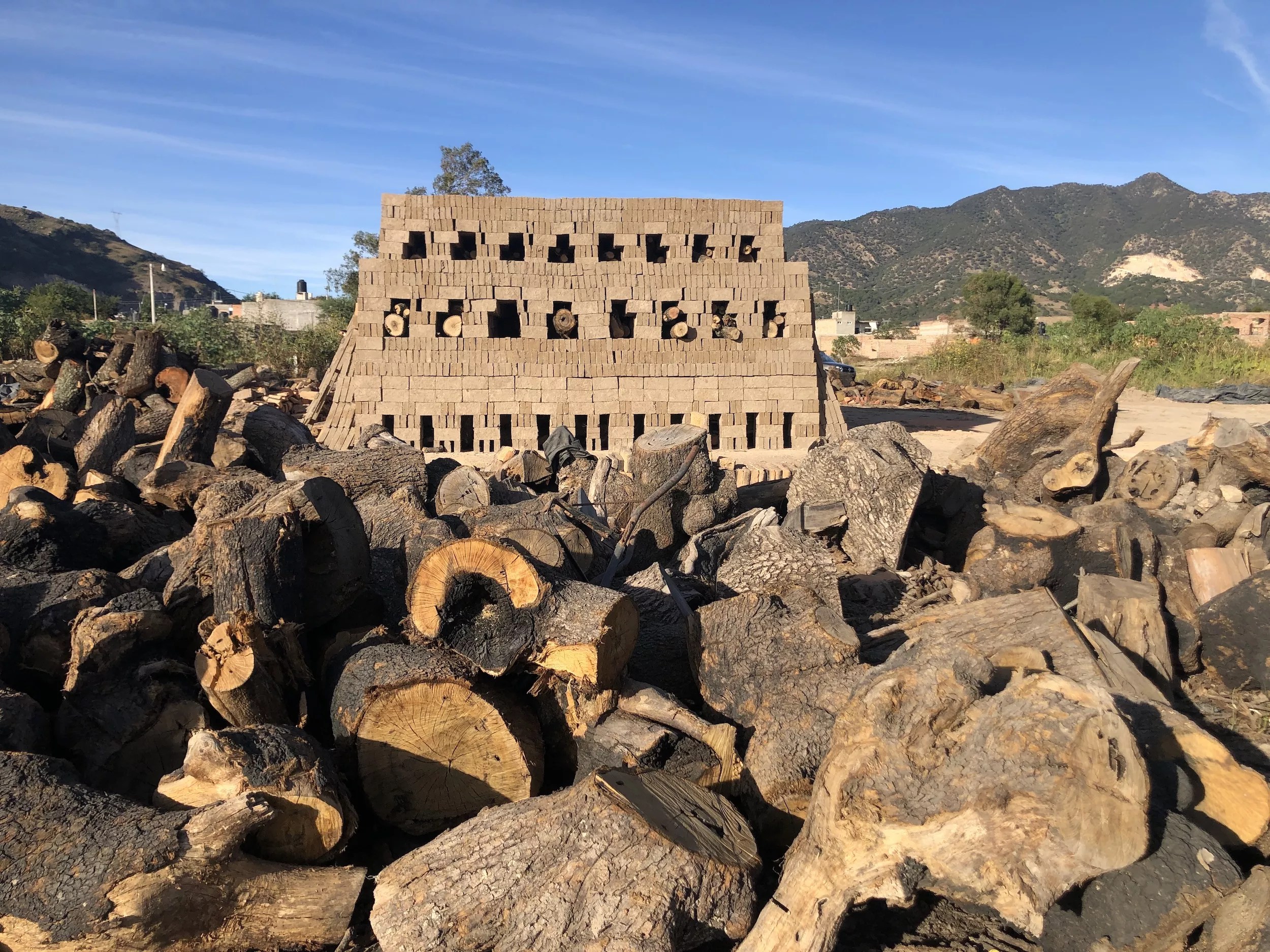
Courtesy of Alejandro Almanza Pereda and Black Cube

Audio By Carbonatix
The beauty of an art museum without walls is how it can take advantage of the global village of artists and a whole planet full of untapped exhibition spaces, both formal and quirkily informal, from the majesty of Red Rocks Amphitheatre to a parking lot. Even with a permanent Denver headquarters that opened in 2019, Black Cube Nomadic Museum’s Cortney Lane Stell, who’s been at the museum’s helm as director and curator since it launched just over five years ago, always finds new ways to integrate art into the world at large.
That’s a freedom many curators never get to have, and the imperturbable Stell knows it, especially in a pandemic-driven year. So the “intentially nomadic” Black Cube hasn’t been thwarted like other arts institutions, she says, and continues to work at full speed, while making some adjustments to make sure that artists suffering hard times get paid for their work.
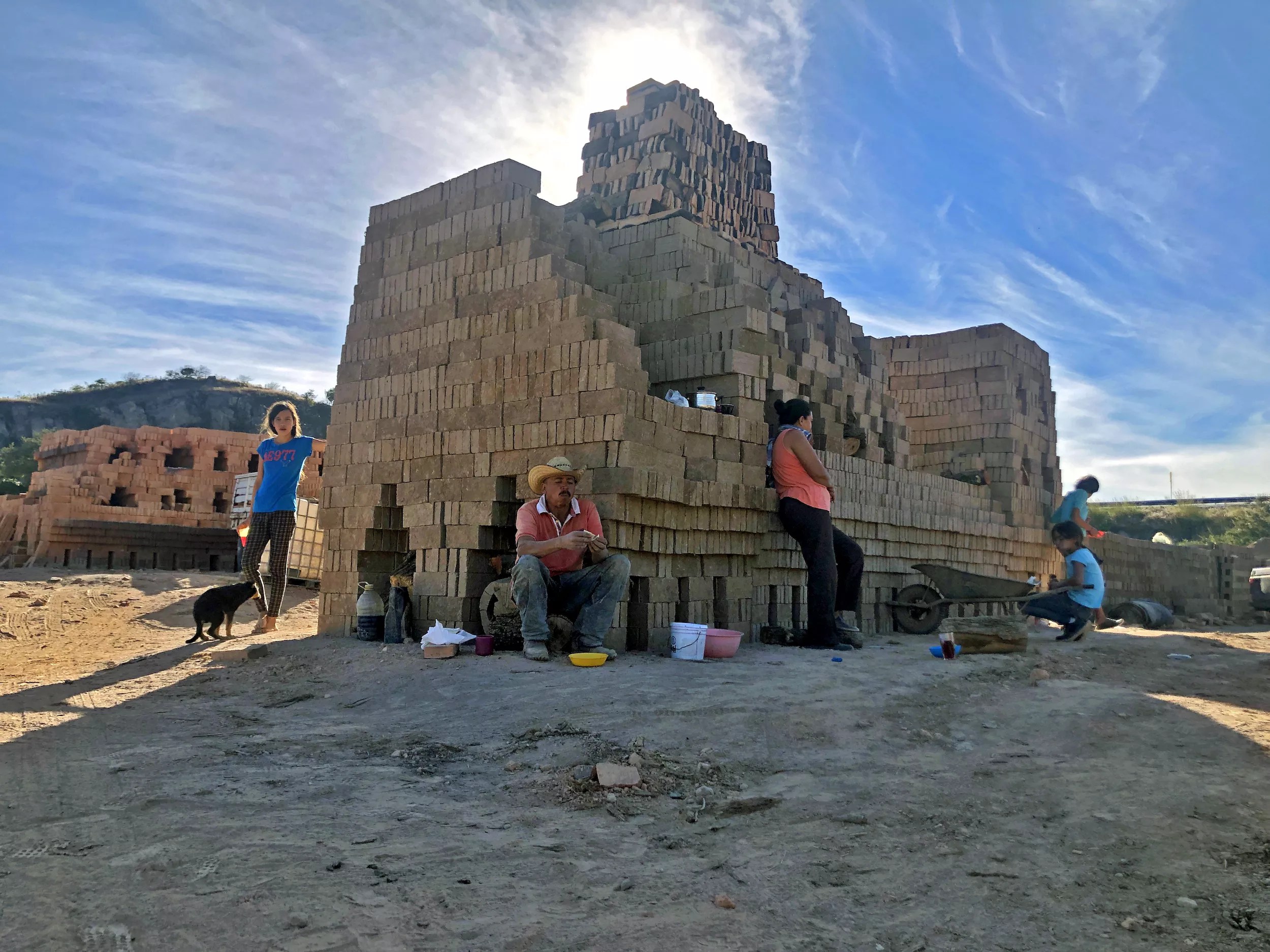
A Magdalena brickmaking family pictured with their kiln after assembly.
Courtesy of Alejandro Almanza Pereda and Black Cube
“While art production has been impacted,” Stell says, “work with fabricators is still easy. Cranes are actually a good social-distancing tool.”
So is film: Black Cube’s latest project, “De esos polvos estos barros,” by Guadalajaran artist Alejandro Almanza Pereda, is set to stream online on Friday, February 26, on YouTube. “With a film platform, you can see it from home and still have a contemporary-art experience without leaving your house,” Stell notes.
Stell has had Almanza Pereda, primarily a sculptor and photographer, on her mind for an exhibition since before Black Cube even came into existence. “I followed him all over Mexico. He had a bajillion sculptural ideas,” she admits. “He has two types of practices. He’s a well-known sculptor who pushes the limits of materials in a precarious balance. In one work of his, there’s a wooden stage suspended from glass neon lights.
“He also has a beautiful photography practice,” Stell continues. “That side is a more formalist, elegant type of photography, shooting still lifes that defy gravity. They are actually shot underwater to create an illusion. He’s masterful at creating things that encourage a sense of impossibility.”
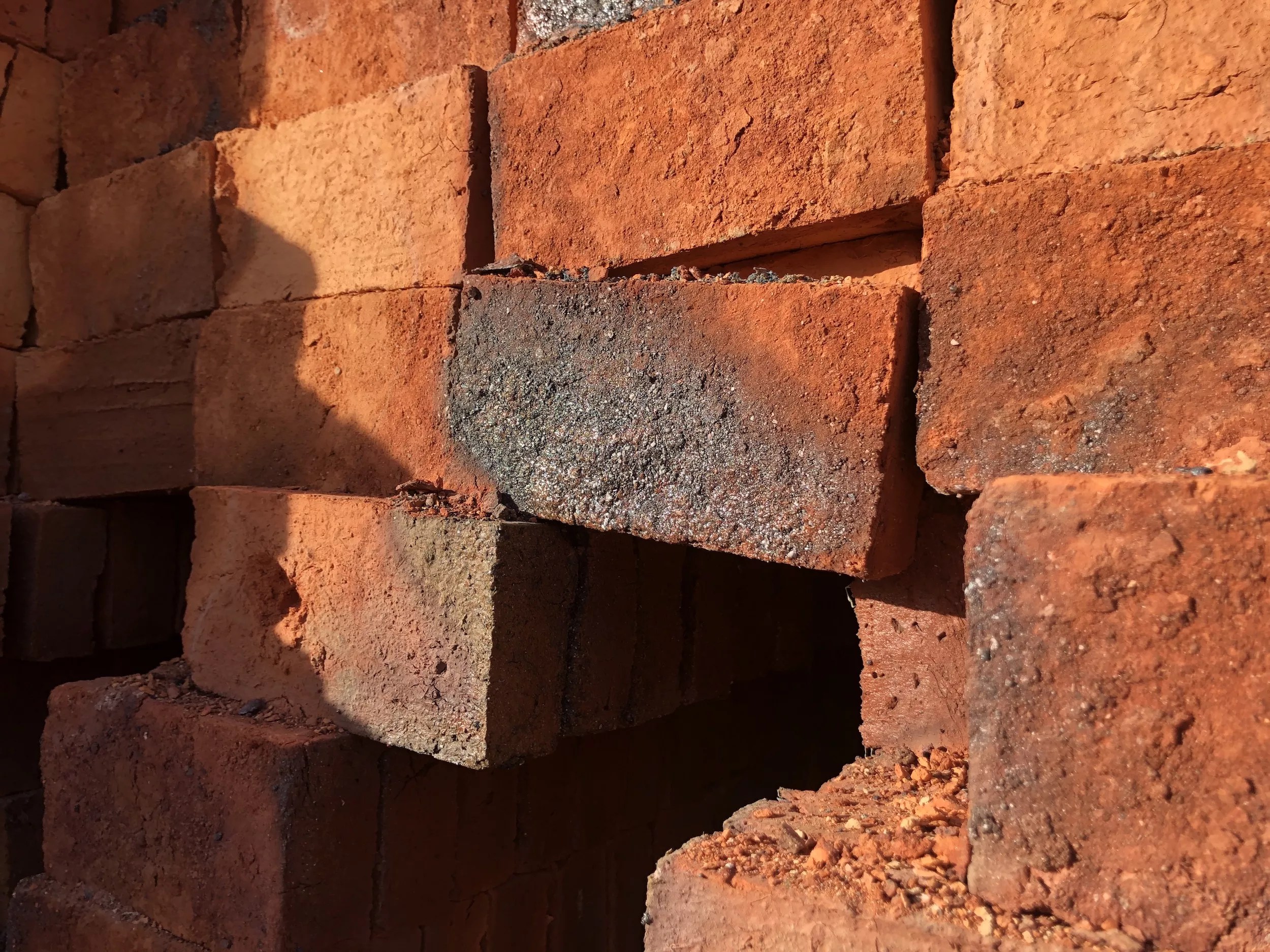
A close-up of bricks after firing.
Courtesy of Alejandro Almanza Pereda and Black Cube
But “De esos polvos estos barros,” Almanza Pereda’s first artistic venture into moving images, evokes a more down-to-earth reality.
“During his whole career, Alejandro has been interested in construction methods,” Stell explains. “Members of his family have worked in various construction fields – some as builders, others as architects. He’s interested in how materials transform. This film is about the life cycle of a brick as seen from a specific historical process in Magdalena, Jalisco, Mexico, and its beautiful alchemy; the bricks are made from dust and earth, then formed and mixed with hay, and the mixture is put in molds to dry.
“In this town they take the unfired bricks and use them to build kilns that look uncannily like ziggurats. They fill the kilns with bricks and sticks and light a fire inside,” Stell adds. “Then the kilns are disassembled and the bricks are used in building. He looks at the building, and how the building falls apart; it’s like ashes to ashes. And it’s also about this small cottage industry that’s now disappearing in Magdalena. As he was shooting the workers, they were talking about how a brick-making machine was being shipped there.”
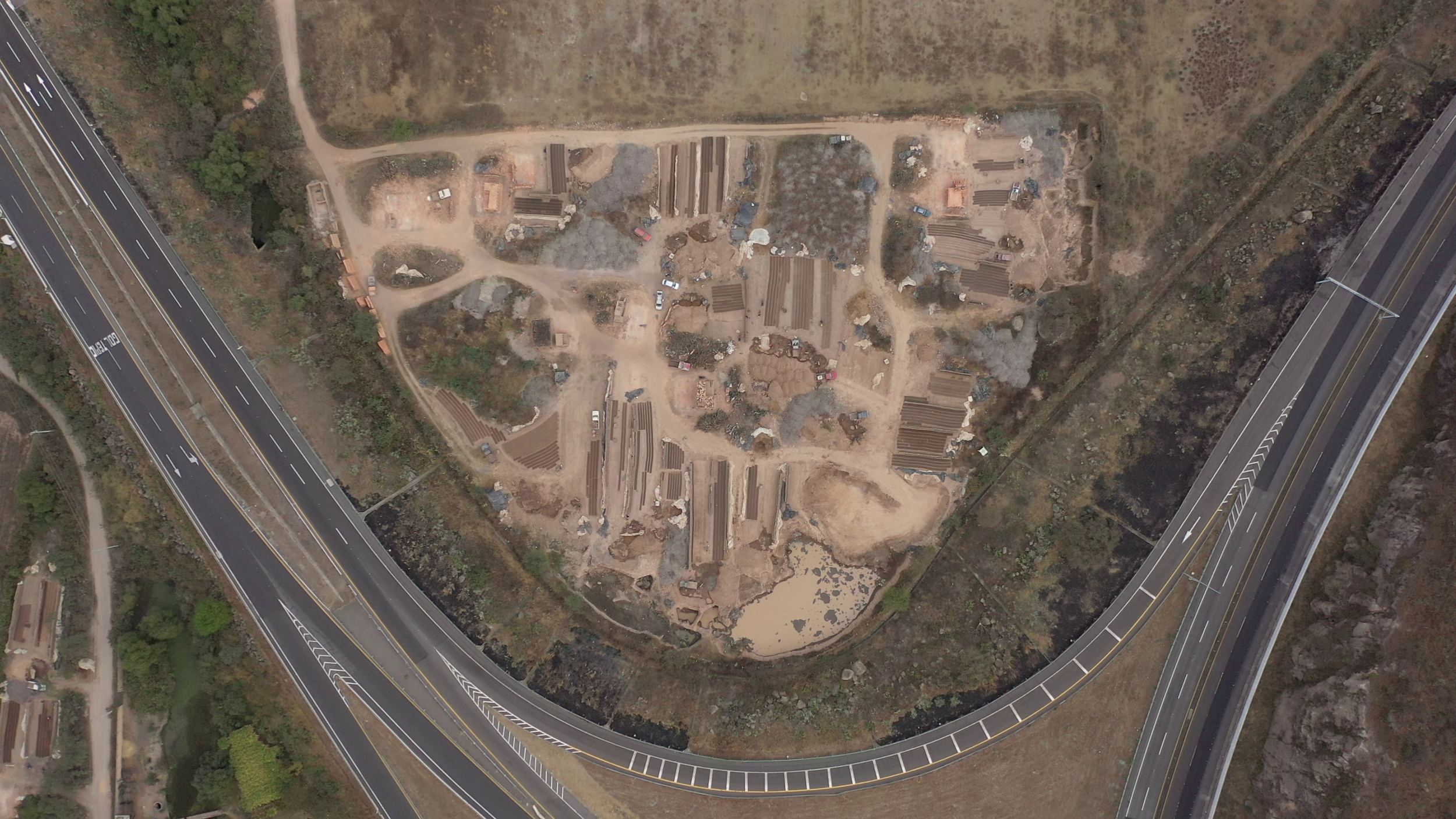
Drone footage of the brickmaking site in Magdalena.
Courtesy of Alejandro Almanza Pereda and Black Cube
Music is as important to the film as its sense of history and rapid change, and includes everything from Mexican polka music on a car radio to experimental sounds by Almanza Pereda.
The images in the film, Stell notes, are “bricolaged into small vignettes. There are a million small, different
melodies and sounds woven together here to create an undulating soundtrack that’s both ethereal and specific to culture.”
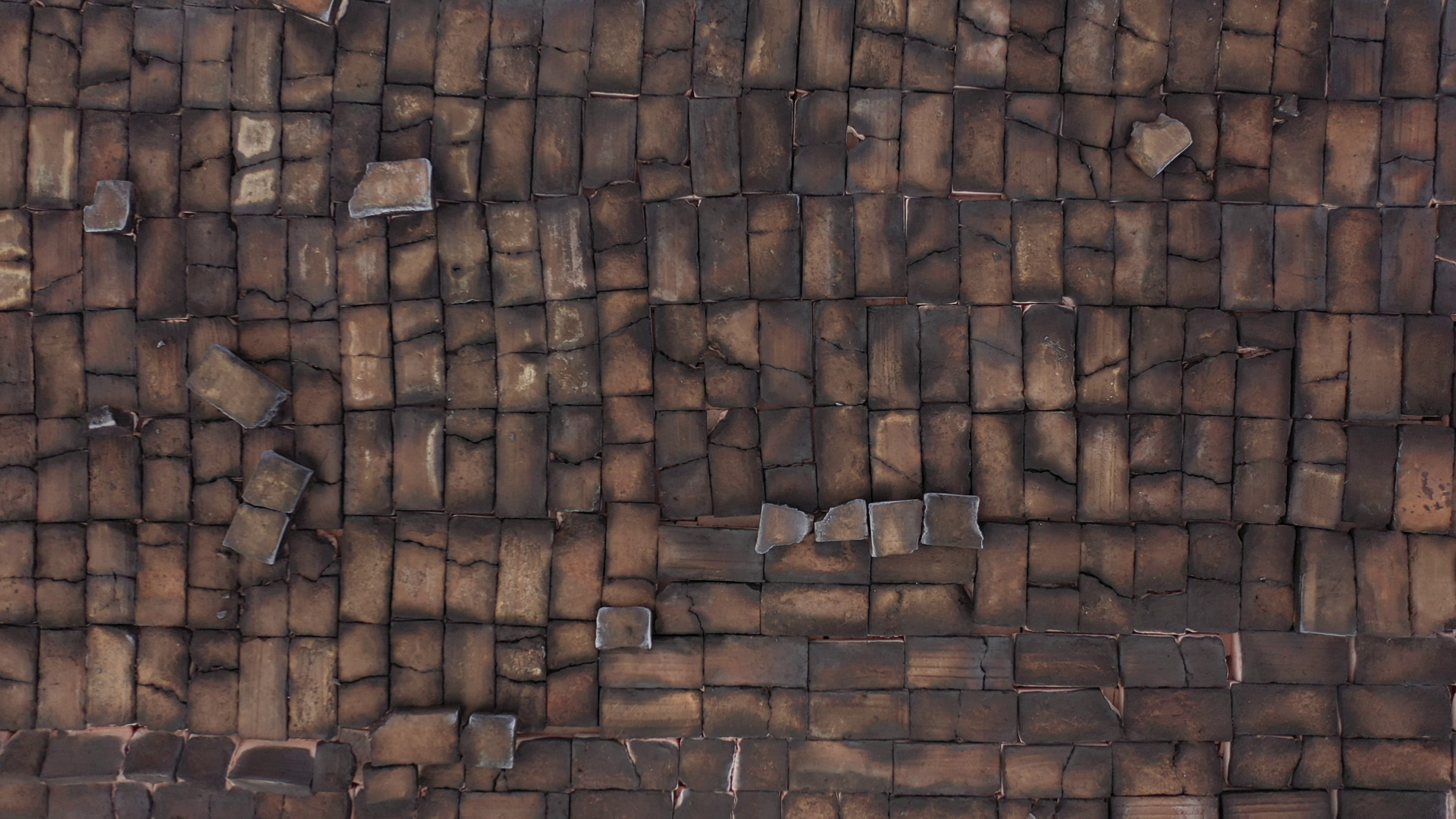
Aerial view of the kiln’s roof after firing.
Courtesy of Alejandro Almanza Pereda and Black Cube
For viewers, she says, the short film is “like a little meditation on a simple material that’s omnipresent in the world. The workers are literally shaping earth and using fire to vitrify it. There’s a sense of immediacy about making something out of nothing.”
“De esos polvos estos barros” by Black Cube fellow Alejandro Almanza Pereda, will premiere on Friday, February 26, at 7 p.m., following by a pre-recorded interview of the artist by José Esparza Chong Cuy, executive director and chief curator of the Storefront of Art and Architecture. Learn more and find the link for Black Cube’s YouTube channel on the website.